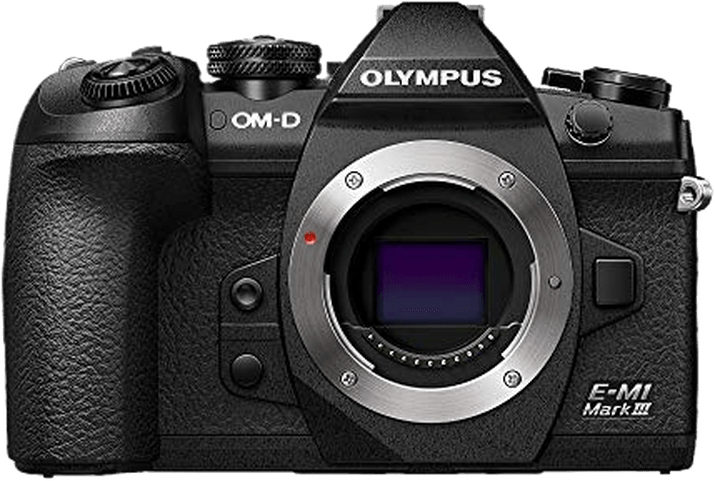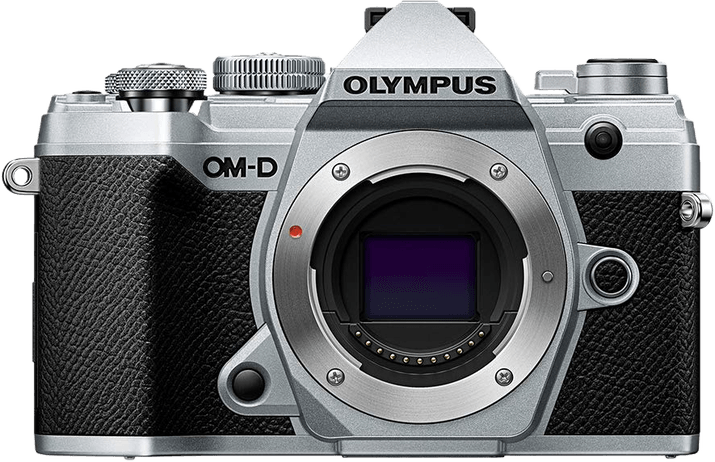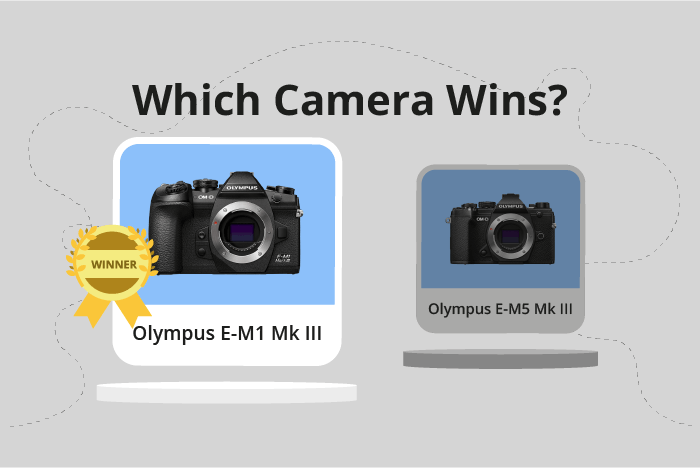Olympus OM-D E-M1 Mark III vs OM-D E-M5 Mark III Comparison
Olympus OM-D E-M1 Mark III

Olympus OM-D E-M5 Mark III

The Olympus OM-D E-M1 Mark III takes the lead with a score of 72/100, while the Olympus OM-D E-M5 Mark III trails behind at 65/100. Both mirrorless cameras share some common features but have differences that set them apart.
The E-M1 Mark III and E-M5 Mark III were released in 2020 and 2019 respectively, with launch prices of $1799 and $1199. Both cameras have similar dimensions, with the E-M1 Mark III measuring 134 x 91 x 69mm and the E-M5 Mark III at 125 x 85 x 50mm. However, the E-M1 Mark III is notably heavier, weighing 580g compared to the E-M5 Mark III’s 414g.
The E-M1 Mark III outperforms the E-M5 Mark III with its higher score, which reflects its superior features and performance. On the other hand, the E-M5 Mark III is a more budget-friendly option and offers a lighter, more compact design. When deciding between these two cameras, consider your priorities and preferences in terms of performance, price, and portability.
Olympus OM-D E-M1 Mark III vs OM-D E-M5 Mark III Overview and Optics
The Olympus OM-D E-M1 Mark III outperforms the Olympus OM-D E-M5 Mark III in optics, scoring 68/100 compared to the E-M5 Mark III’s 60/100. Both cameras share some common specifications, such as 20-megapixel resolution, CMOS sensor type, Micro Four Thirds sensor size, Micro 4/3 lens mount, and image stabilization.
The E-M1 Mark III excels with its shooting speed of 60, which is double the E-M5 Mark III’s shooting speed of 30. This faster shooting speed allows for capturing quick-moving subjects and action scenes more effectively. Additionally, the E-M1 Mark III is equipped with a more advanced TruePic IX processor, compared to the E-M5 Mark III’s TruePic VIII processor. This contributes to better image quality and processing speed. The E-M1 Mark III also boasts a higher DXOMARK sensor score of 80, significantly better than the E-M5 Mark III’s score of 55, indicating superior overall sensor performance.
On the other hand, the E-M5 Mark III does not possess any specific advantages in terms of optics compared to the E-M1 Mark III. The lower score reflects its inferior shooting speed, processor, and sensor performance. However, it still shares the same basic specifications with the E-M1 Mark III, making it a decent option for those seeking a more affordable camera with similar features.
To conclude, the Olympus OM-D E-M1 Mark III is the superior camera in terms of optics, with its faster shooting speed, advanced processor, and better sensor performance. The E-M5 Mark III, while lacking in certain aspects, still shares some common specifications with the E-M1 Mark III, making it a viable option for those on a budget.
Olympus OM-D E-M1 Mark III vs OM-D E-M5 Mark III Video Performance
The Olympus OM-D E-M5 Mark III emerges as the winner in the video capabilities comparison, with a score of 91/100, outperforming the Olympus OM-D E-M1 Mark III, which scored 83/100. Both cameras share certain specifications, such as a maximum video resolution of 4K and dimensions of 4096 x 2160. Additionally, they both have built-in time-lapse functionality.
The E-M5 Mark III outshines the E-M1 Mark III in terms of video frame rate, offering a maximum of 120fps, whereas the E-M1 Mark III only reaches up to 60fps. This higher frame rate allows the E-M5 Mark III to capture smoother and more detailed slow-motion footage, which is crucial for professional videographers and filmmakers.
On the other hand, the E-M1 Mark III does not have any significant advantages over the E-M5 Mark III in terms of video capabilities. This indicates that the E-M5 Mark III is a better choice for those who prioritize video performance in their camera selection.
To sum up, the Olympus OM-D E-M5 Mark III is the superior choice for video capabilities due to its higher score and its ability to capture smoother slow-motion footage thanks to its 120fps maximum frame rate. The E-M1 Mark III, while still a capable camera, falls short in this aspect, making the E-M5 Mark III the better option for videographers and filmmakers.
Olympus OM-D E-M1 Mark III vs OM-D E-M5 Mark III Features and Benefits
The Olympus OM-D E-M1 Mark III and the Olympus OM-D E-M5 Mark III both have a feature score of 83/100. These cameras share several specifications, making them similar in terms of features.
Both cameras have a 3-inch screen with a close resolution – the E-M1 Mark III has 1,037,000 dots, while the E-M5 Mark III has 1,040,000 dots. They are both equipped with a touchscreen and a flip screen, making them user-friendly and versatile. Neither of the cameras has GPS, but they both have WIFI and Bluetooth capabilities.
Despite the identical feature scores, the E-M1 Mark III has some advantages over the E-M5 Mark III. The E-M1 Mark III has a slightly lower screen resolution, which may result in a marginal difference in display quality. However, this difference is not significant enough to declare a clear winner between the two cameras based on this specification alone.
On the other hand, the E-M5 Mark III has a slightly higher screen resolution, which could provide a slightly better display quality. However, as mentioned earlier, this difference is minimal and does not significantly impact the overall performance of the cameras.
After analyzing the features of both cameras, it is clear that they share many similarities, and their identical feature scores reflect this. While the E-M5 Mark III has a marginally higher screen resolution, the difference is not substantial enough to declare it a superior camera. Therefore, both the Olympus OM-D E-M1 Mark III and the Olympus OM-D E-M5 Mark III offer comparable features, and the decision to choose one over the other would likely depend on personal preferences and other factors such as price and availability.
Olympus OM-D E-M1 Mark III vs OM-D E-M5 Mark III Storage and Battery
The Olympus OM-D E-M1 Mark III outperforms the OM-D E-M5 Mark III in storage and battery with a score of 71/100, compared to the latter’s 35/100. Both cameras accept SD, SDHC, and SDXC memory cards, and offer USB charging. However, the E-M1 Mark III has two memory card slots, with one slot being UHS-II compatible, while the E-M5 Mark III has only one UHS-II compatible slot.
The E-M1 Mark III also boasts a longer battery life of 420 shots, utilizing the BLH-1 battery. In contrast, the E-M5 Mark III’s battery life is 310 shots, relying on the BLS-50 battery. The longer battery life and additional memory card slot make the E-M1 Mark III superior in terms of storage and battery capabilities.
On the other hand, the E-M5 Mark III’s lower storage and battery score does not offer any advantages. Both cameras share USB charging capabilities, but the E-M5 Mark III falls short in memory card slots and battery life.
Considering the significant difference in scores and the E-M1 Mark III’s advantages in storage and battery life, it is evident that the Olympus OM-D E-M1 Mark III is the better choice for photographers requiring extended shooting sessions and additional storage options.
Olympus OM-D E-M1 Mark III vs OM-D E-M5 Mark III – Our Verdict
Are you still undecided about which camera is right for you? Have a look at these popular comparisons that feature the Olympus OM-D E-M1 Mark III or the Olympus OM-D E-M5 Mark III:

